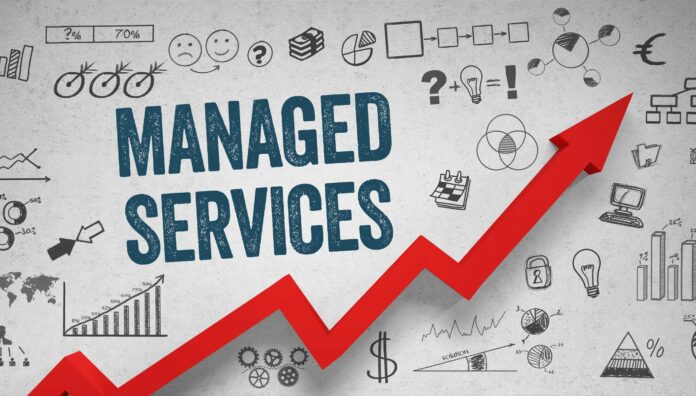Complete explanation of Managed Service will be described in this article. Whether you’re a business executive or an experienced IT professional, employing managed services can simplify your job. When properly carried out, a Managed Service (MS) is comparable to obtaining access to an IT Department with the knowledge of seasoned experts to provide targeted application operations to your company’s business application users.
What Is A Managed Service Complete explanation
In this article, you can know about What Is A Managed Service Complete explanation here are the details below;
What is a managed service?
Simply simply, an MS is intended to manage the day-to-day operations of your specialised applications.
A managed service can:
- Increase the capabilities of your company’s end users.
- Enable internal IT to concentrate on more strategic IT initiatives.
- Allowing your team to concentrate on the strengths of your company
- This frequently manifests itself when IT experts observe a deterioration in the present knowledge base, lowering the calibre of IT support provided to your business.
The following are further indications that an MS is required:
- Due to a lack of Service & Support, we weren’t able to do what we intended in the previous year.
- “There were too many service failures and downtimes.”
- “We overspent our money on performance-decreasing changes to our business applications.”
- “We lost data because the remedy was inadequate,”
I frequently offer suggestions on how a managed service might assist address these issues based on my experience dealing with both small and large client firms. In the course of my career, I have worked with a wide range of clients who use managed services in different ways. Most recently, I offered a managed solution to a sizable energy firm, which found the service to be frictionless and dramatically increased worldwide end-user and IT support staff satisfaction. Also check Background Check Services
Here are some personnel and technological recommendations on how to reorganise and empower your IT Department for growth via MS if you’re noticing some of these characteristics at your business.
Assessing the need for managed services
IT managers are under a lot of pressure nowadays to maintain cost efficiency while also providing the performance, operational, and security requirements of the company. Most financial professionals would advise switching to a managed solution with known costs in these circumstances. A Managed Service Provider is a business that offers these services (MSP).
When you are:
- Establishing future strategic objectives
- Adding new services to your IT infrastructure
- Your current workforce may frequently lack the knowledge of a new technology or the ability to support new services or apps.
- To deliver the service, you could hire contractors.
- But, if your budget is static or shrinking, this can be more expensive and offer less value in assisting your company’s expanding performance goals.
- This is frequently true for both small and large businesses.
- Throughout time, Managed Service models have changed, and seasoned providers have gotten better at delivering them.
It works well for companies that:
- Rely on their IT infrastructure to effectively support their regular business procedures
- Do not have enough time or properly skilled people to deal with official maintenance, upgrades, and repairs
- Want to supply the business with high-quality services for a single monthly flat price
- IT supports the business engine for the majority of commercial services.
- A business might spend a lot of money hiring and keeping in-house support workers, including the software, hardware, and expertise necessary to keep the service functioning.
- The requirement for on-site IT employees can be restricted to the exceptions where operational sensitivity merits it, though, given the maturity of managed service models and the move to virtualization and cloud computing.
- In light of uncertain requirements, a business may think about utilising managed service professionals to ensure improved IT expense predictability.
Costs for MSPs
MSPs typically charge on a subscription basis for their services. Pricing is typically based on the number of devices with pricing tied to bundles spanning a range of categories, depending on the services chosen. When necessary, some offer on-site client service. Basic services frequently begin with a monitoring service that spots possible problems for you to fix on your own. At the opposite end of the spectrum, service providers offer comprehensive managed services that encompass everything from alarms to problem solutions.
Benefits of Managed Services
There are several advantages to managed services.
Better Cost Control
The availability and importance of a certain service are two cost-related aspects for a business service. The MSP assumes the normal cost elements of an IT department, such as employees, equipment, and training, and presents these costs to the business as a flat monthly fee. This aids in accurately forecasting spending each month when creating a budget. The managed service can scale to handle such eventualities, depending on future needs and the rate of IT maturity in your company. Also check Dry cleaning services
The largest advantage is that a business can choose how much to scale based on financial considerations and the strategic vision of the CIO. The danger of additional losses can be reduced by preventing IT service interruptions and outages. Regarding the energy provider, the client went from having many scheduled outages every day to just one per month.
Improved risk management
Every firm faces some level of risk. This can be reduced by reducing the specific risk associated with each crucial business service. By providing their own unique processes and access to cutting-edge hardware and software, an MSP can assist reduce risk. This makes it possible to follow best practises and reduces the risk associated with service delivery.
The MSP controls and takes a large portion of the risk for the business it supports by:
- having expertise in a certain industry, particularly in relation to security and compliance concerns
- Working with your business and advising you on the best method to prevent risk in your areas of expertise
High availability, efficiency & productivity
The adage “time is money” is always true when it comes to IT services. Many organisations place the highest premium on maintaining the availability of mission-critical IT services in order to achieve maximum business performance. It is challenging to gauge the precise cost of downtime. Yet you can take proactive actions to avoid it entirely. At worst, reputational harm may come into play if the outage is noticed by those outside the organisation, perhaps undermining public confidence.
Customers receive improved performance with little downtime when using a managed service. Mission-critical applications may incorporate a number of different technologies, all of which must be fully functional and integrated in order to provide the IT service required. The IT service must have all of its component apps available at once in order for internal end users to benefit from it. A MSP can guarantee optimum uptime and minimal service interruptions. Companies that try to implement and maintain all IT services internally typically have: Significantly greater costs for research and development (R&D) longer deployment times You’re probably passing this extra expense on to the people who use your services. The MSP, on the other hand, is very effective at providing IT services to the business in a way that keeps prices down and the time to deploy short while providing a high-quality service.
Future-proofing IT Services
IT departments will always face funding, technological, security, and operational difficulties. I have seen several firms successfully use AMS to obtain the full benefit of seamless service integration with less concern over resource limitations while you search for ways to reduce expense. With the opportunity to lock in pricing for a number of years, MSPs will always have their employees trained on forthcoming and new releases as well as new technology. Your company will reduce operational risk and problems and minimise service disruption by increasing predictability.
Managed service best practices
The benefits of managed service providers are numerous:
- To swiftly and efficiently provide new IT services to your business, MSPs enable realistic delivery of a predictable service model and cost.
- MSPs also help IT and business leaders feel more secure and at ease.
- In the contemporary corporate climate, it is challenging to provide innovative business services to the organisation while controlling expenses.
- A managed service is an excellent method for making your IT organisation extremely resilient and cost predictable from fiscal year to fiscal year.
- MSPs work in addition to existing personnel and do not replace them; rather, they free up these priceless resources to direct and execute the strategic IT projects required to advance business objectives.
- An MSP will assist larger firms in concentrating their efforts on more strategic issues.
- With today’s managed service offerings, you can be sure that your business is minimising the dangers related to keeping client data, confidential competitor information, and more.
BMC for managed services
To keep on top of IT business needs and reduce unsystematic risks, think about utilising multiple managed service packages when you start investing in new applications. Please fill out our ContactMe form to speak with someone about our MS options if you are thinking about investing in BMC technology.





